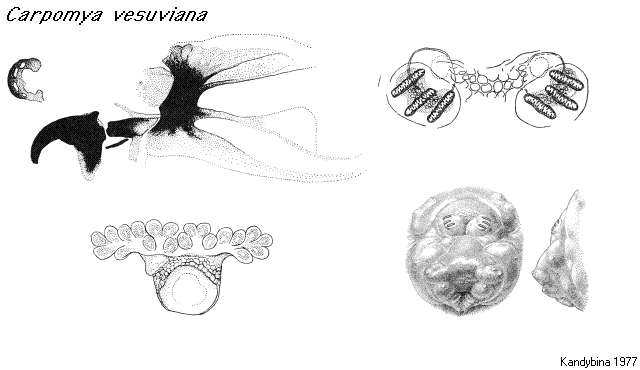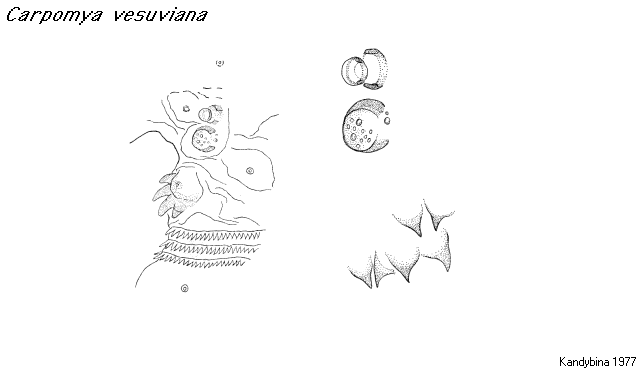Carpomya vesuviana
Common name
ber fruit flyDescription
Typical of Carpomya larvae with the following specific characteristics for the third instar:
Body. Body length ~8 mm.
Head. Stomal region: 4 sclerotized stomal guards present. Number of oral ridges 3, dentate margins with closely spaced teeth.
Anterior spiracles. Number of anterior spiracular tubules 20-23.
Caudal segment (A8) and anal lobes. Intermediate caudal sensilla I1a&b and I2 on a single tubercle. Anal lobes small.
Spinules and creeping welts. Dorsal spinules on T1-A6, or with unusual distribution.
Posterior spiracles. Slits 4-5x longer than wide. Dorsal spiracular processes with only 1 or 2 trunks. Area between posterior spiracles with cellular or rugose appearance.
Host plants
| Family | Genus |
| Rhamnaceae | Ziziphus |
Part of plant attacked: fruit.
Biogeographic region and distribution
Oriental, PalearcticItaly, Bosnia, Caucasus, Central Asia, Pakistan, India, Thailand.
Adult taxonomy
Carpomya vesuviana CostaCarpomya vesuviana Costa 1854: 87.—Italy. Sicily: agro Neapolitano [Naples countryside]. ST A IZUSN?
Orellia bucchichi Frauenfeld 1867: 500.—Lesina [Bosnia. Hvar]. HT ♀ NMW.
Carpomyia zizyphae Agarwal & Kapoor 1985: 60.—India. Punjab: Ludhiana Distr., Seikhupura. HT ♀ INPC?
Carpomyia buchicchii Rondani 1870: 23.—missp. bucchichi Frauenfeld.
References
Carroll, L. E., A. L. Norrbom, M. J. Dallwitz, and F. C. Thompson. 2004 onwards. Pest fruit flies of the world – larvae. Version: 8th December 2006. http://delta-intkey.com.
White, I. M., and M. M. Elson-Harris. 1992. Fruit flies of economic significance: their identification and bionomics. CAB International; Wallingford, UK. 601 p.





